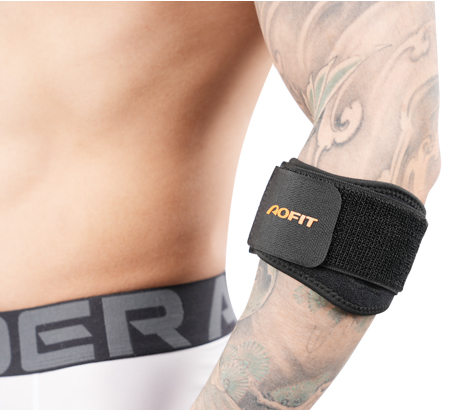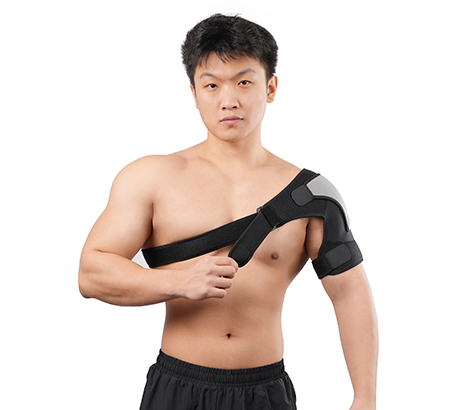Sports injuries can range from minor nuisances to major, potentially lifelong problems. Regardless of the severity of the injury, there are ways to prevent and treat sports injuries. One method that has been utilized for years is sports braces.
Sports braces are devices that are designed to support, protect or immobilize a particular part of the body during sports or physical activities. These devices can come in different shapes, sizes, and designs, and can be used for various conditions. In this article, we will take a look at the most common sports injuries that are treated with braces, what types of braces are available, and how to choose the right brace for your needs.
Tennis Elbow
Tennis elbow is largely an affliction of middle age, and it is believed that degenerative changes in the orbicular ligament may underlie its pathology. This condition is caused by overusing the muscles and tendons in the forearm that extend to the wrist and fingers. The most common type of brace used for tennis elbow is an elbow strap. This strap wraps around the forearm and applies pressure to the muscle, relieving tension on the tendons. In some cases, an elbow sleeve or compression sleeve may also be used to help reduce swelling.


Knee Injuries
Knee injuries are common among athletes, especially those involved in sports such as soccer, football, and basketball. One of the most common knee injuries is the Anterior Cruciate Ligament (ACL) tear. Isolated ACL tears continue to be a prevalent orthopedic injury, with an annual incidence of 68.6 per 100,000 person-years. This is a serious injury that needs medical treatment and surgery. However, using a knee brace can help stabilize the knee and keep the ACL from becoming further damaged. There are several types of knee braces available, including functional knee braces, prophylactic knee braces, and rehabilitative knee braces. Each type of knee brace serves a specific purpose, and it is essential to choose the right brace based on the severity of the injury.


Ankle Injuries
Ankle injuries such as sprains are common in sports like basketball and volleyball. These types of injuries are often treated with ankle braces that help stabilize the ankle and prevent the foot from rolling. Some ankle braces are designed to be worn during games or practices, while others are made for after-game recovery. There are various types of ankle braces, including lace-up braces, stirrup braces, and hinged braces.


Shoulder Injuries
Shoulder injuries are prevalent in sports like volleyball and baseball, where overhead movements are common. These types of injuries are often treated with shoulder braces that provide support and stability to the shoulder joint. Shoulder braces are designed to fit snugly around the shoulder and can be worn during games or practices. Some shoulder braces are designed to immobilize the shoulder joint, providing support during the healing process.


Wrist Injuries
Wrist injuries are common in sports like tennis and golf, where the wrist is heavily used. The most common type of wrist injury is wrist sprains. These types of injuries are often treated with wrist braces, which help stabilize the wrist and reduce pain. Sports wrist support can come in various designs, including wrap-around braces and wrist sleeves. Some wrist braces come with a removable splint that can be used for additional support.


Choosing the Right Sports Brace
Choosing the right sports brace can be challenging, but it is essential to get it right to help prevent further injury. When choosing a sports brace, consider the following:
1. Consult with a Doctor – Before choosing a brace, it is essential to consult with a doctor or physical therapist. They can help determine the severity of the injury and recommend the best brace for your needs.
2. Consider the Type of Injury – Different types of braces are designed for different types of injuries. Understanding the type of injury you have is essential in selecting the right brace.
3. Quality vs. Price – While price is an important consideration, it is essential to focus on the quality of the brace. A high-quality brace will often provide better support and last longer than a cheaper alternative.
4. Comfortability – Sports braces can be uncomfortable, so it is essential to choose a brace that is comfortable to wear, without hindering performance.
Conclusion
Injuries are an unfortunate part of sports, but they don't have to be the end of a sports career. Sports braces can help prevent further injury and aid in the recovery process. With the help of a doctor or physical therapist, choosing the right brace can mean the difference between a complete recovery and a potentially lifelong injury. Remember to consider the type of injury, the quality of the brace, and comfortability when choosing a sports brace. With the right brace, athletes can continue to play the sports they love with confidence and ease.
Whichever type of sports brace you may need, AOFIT brand has a comprehensive range of sports braces designed to cater to your specific needs. Our sports braces are manufactured using high-quality materials that provide comfort and durability while helping you stay active and injury-free.